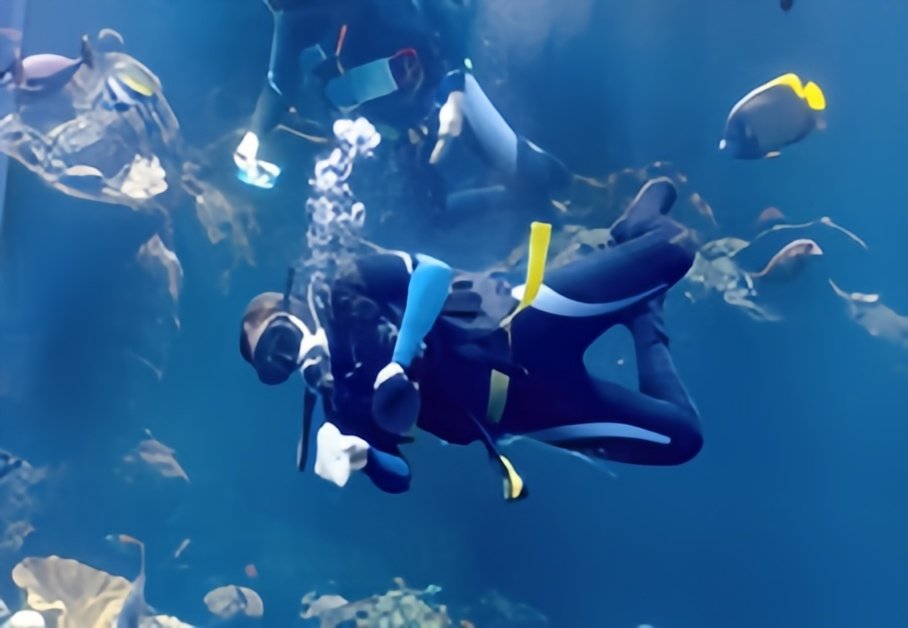Depth and Diving Time
| Depth | Diving Time |
|---|---|
| 0-10m | 120 minutes |
| 10-20m | 60 minutes |
| 20-30m | 40 minutes |
| 30-40m | 30 minutes |
The deeper you dive, the more air you consume due to the increased pressure. At greater depths, the air in your tank is used up more quickly.
Tides
Tides, influenced by the moon, play a significant role in diving. There is generally a rise or fall every six hours. Divers need to be especially cautious during the two significant tidal peaks each month, as these can cause particularly strong water currents.
Visibility
Visibility refers to the clarity of the water. Several factors influence visibility:
- Season: Visibility is generally better in winter than in summer.
- Time of Day: Better in the morning than in the afternoon.
- Location: Rocky shores usually have better visibility than sandy shores.
- Tidal Transition: Visibility is better during the transition between high and low tides.
Air Embolism
Air embolism is a critical condition that divers must be aware of. While underwater, divers breathe high-pressure air supplied by a tank, regulated by the regulator. If a diver inhales high-pressure air and then ascends too quickly, it can lead to lung rupture due to the lower surrounding water pressure compared to the air pressure in the lungs. Air can enter the bloodstream, causing blood circulation to stop. To avoid this, divers should never hold their breath while ascending and should maintain slow and deep breathing.
Nitrogen Narcosis
Nitrogen narcosis typically occurs at depths of around 30 meters. It impairs thinking and judgment, and in severe cases, it can be fatal. Divers should be aware of their depth and monitor themselves for symptoms of narcosis.
Safe Diving Time Table
This table provides a reference for divers to avoid decompression sickness:
| Depth | Time Limit |
|---|---|
| 10m | No limit |
| 12m | 200 minutes |
| 15m | 100 minutes |
| 18m | 60 minutes |
| 21m | 50 minutes |
| 24m | 40 minutes |
| 27m | 30 minutes |
| 30m | 25 minutes |
| 33m | 20 minutes |
| 36m | 15 minutes |
| 39m | 10 minutes |
| 42m | 10 minutes |
This table is only suitable for reference for divers who have not dived in the past 12 hours.
Decompression Sickness
Decompression sickness occurs when nitrogen cannot be expelled from the body, forming small bubbles that can damage body tissues and hinder blood circulation. To avoid this, divers must follow the safe diving time table and ascend slowly, allowing their bodies to expel nitrogen safely.
Carbon Dioxide Poisoning
Symptoms of carbon dioxide poisoning include accelerated breathing, headache, and nausea. Divers should avoid holding their breath to stay underwater longer or performing vigorous activities at deep depths.
Carbon Monoxide Poisoning
Normally, air tanks should not contain carbon monoxide. However, to avoid contamination, divers should not fill their tanks in unfamiliar places where poor exhaust ventilation during the compression process could introduce carbon monoxide into the tank.
FAQs
How does depth affect the duration of an air tank for diving? The deeper you dive, the more air you consume due to increased pressure. Deeper dives result in quicker air consumption.
What is nitrogen narcosis, and how can it be avoided? Nitrogen narcosis impairs thinking and judgment, typically occurring around 30 meters depth. It can be avoided by monitoring your depth and being aware of symptoms.
Why is it important to follow the safe diving time table? Following the table helps prevent decompression sickness by ensuring that nitrogen is safely expelled from the body.
What should divers do to prevent air embolism? Divers should ascend slowly, breathe continuously, and avoid holding their breath to prevent air embolism.
Can you dive with ear diseases, diabetes, or asthma? It depends on the severity and management of the condition. Only a doctor can determine an individual’s diving risk.
What precautions should be taken to avoid carbon monoxide poisoning? Avoid filling tanks in unfamiliar places and ensure proper exhaust ventilation during the compression process to prevent contamination.



